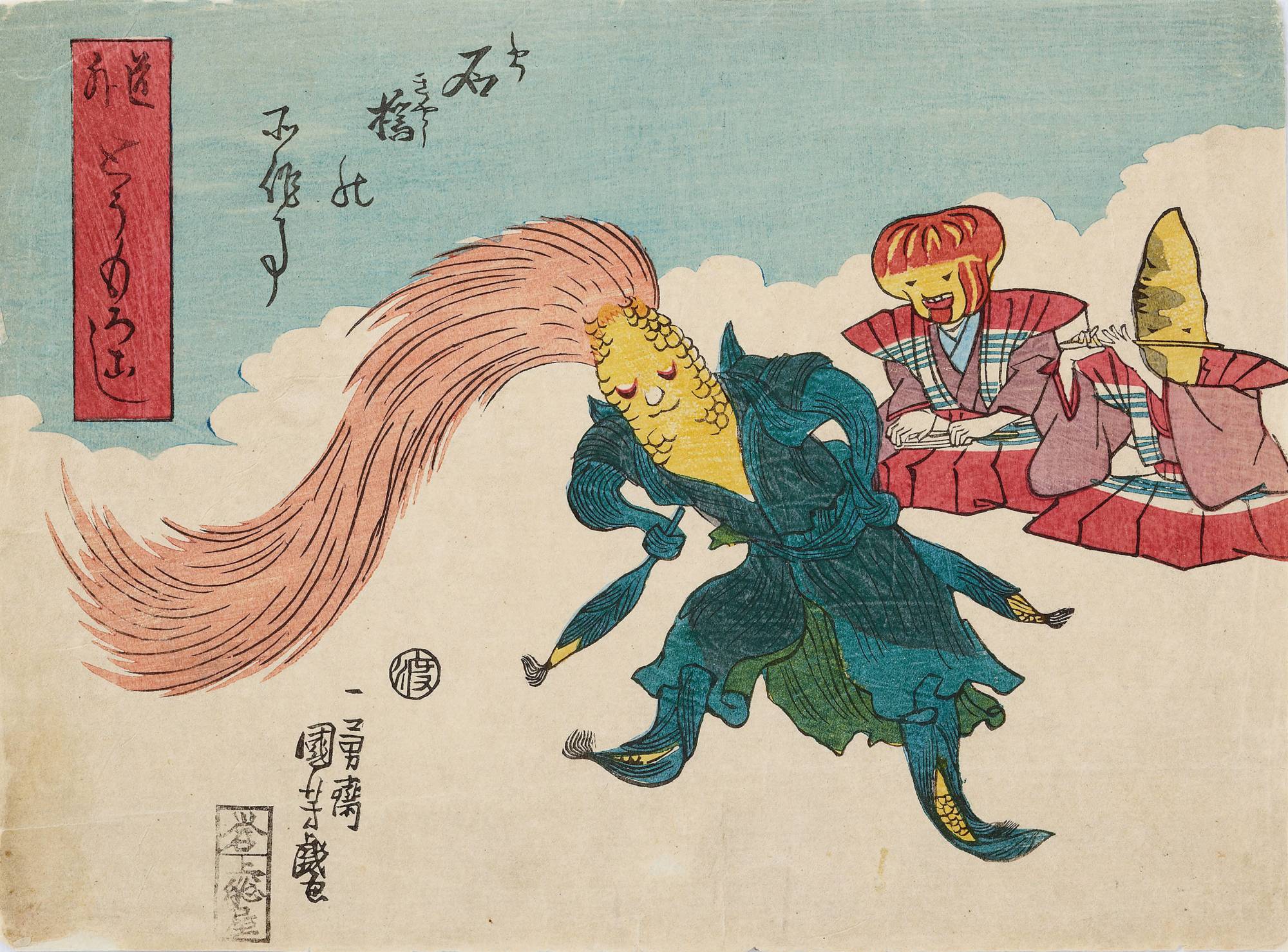Witty and unpredictable: This is how Akira Watanabe, chief curator at the Ota Memorial Museum of Art, describes Utagawa Kuniyoshi, one of Japan’s most gifted 19th-century woodblock print artists. He quickly adds, however, that Kuniyoshi was much more than that. He was also a congenial optimist, a man with a great sense of humor who never lost heart. “Even when his work went out of print due to restrictions imposed by the Tokugawa shogunate, or when he was under investigation by the magistrate’s office,” Watanabe explains over email, “Kuniyoshi never gave up.”
These qualities served him well. Born in the Nihonbashi district of Edo (present-day Tokyo) in 1797, Kuniyoshi lived in a society that often appeared on the brink of collapse. It also underwent a profound transformation during his lifetime: In 1853, Commodore Matthew Perry and his “Black Ships” muscled their way into Edo Bay and forced Japan out of its self-imposed isolation. The first treaty ports, which soon teemed with foreigners, opened a few years later. When Kuniyoshi died in 1861, the end of the Tokugawa regime was clearly foreseeable.
Kuniyoshi’s beginnings as an artist were auspicious, albeit unremarkable. In his early teens, he was apprenticed to Utagawa Toyokuni, the foremost print designer of his day. It was from Toyokuni, in 1814, that Kuniyoshi received his art name, a combination of 國 (kuni), the second character of his master’s moniker, with 芳 (yoshi), the first kanji of his own childhood appellation, Yoshisaburo. This marked his formal introduction into the Utagawa artistic lineage.

















With your current subscription plan you can comment on stories. However, before writing your first comment, please create a display name in the Profile section of your subscriber account page.